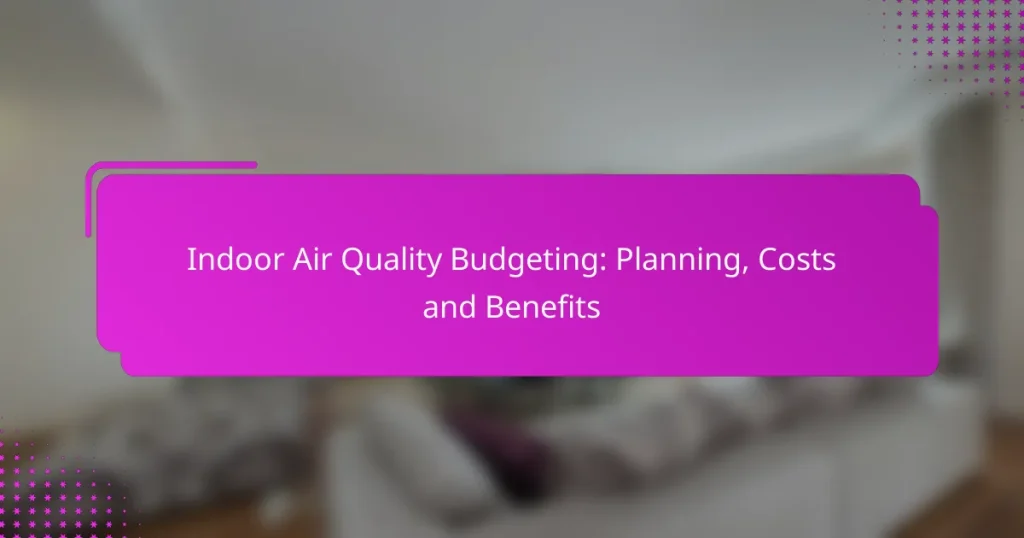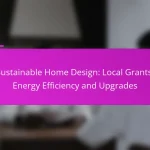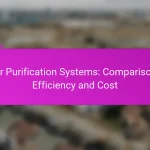Indoor air quality budgeting is essential for creating a healthy living or working environment while managing expenses effectively. By planning for regular assessments and investing in purification systems and ventilation upgrades, organizations can significantly improve air quality. Although costs can vary widely, the benefits—such as enhanced occupant well-being and increased property value—make it a worthwhile investment.

What are the best practices for indoor air quality budgeting?
Effective indoor air quality budgeting involves planning for regular assessments, investing in purification systems, and upgrading ventilation. These practices help maintain a healthy environment while managing costs effectively.
Regular air quality assessments
Conducting regular air quality assessments is crucial for identifying pollutants and ensuring compliance with health standards. These assessments typically involve measuring levels of common indoor contaminants like volatile organic compounds (VOCs), particulate matter, and carbon dioxide.
Consider scheduling assessments at least annually or biannually, depending on the building’s usage and occupancy. Engaging certified professionals can provide accurate results and actionable recommendations for improvement.
Investing in air purification systems
Investing in air purification systems can significantly enhance indoor air quality by removing harmful particles and allergens. Options range from portable air purifiers to whole-building systems, with costs varying widely based on capacity and technology.
When budgeting, consider the size of the space and the specific contaminants present. High-efficiency particulate air (HEPA) filters are recommended for their effectiveness in trapping small particles, while UV light systems can help eliminate biological contaminants.
Implementing ventilation upgrades
Upgrading ventilation systems is essential for maintaining fresh air circulation and reducing indoor pollutant levels. This can involve installing new ductwork, adding exhaust fans, or enhancing existing systems to improve airflow.
Evaluate the current ventilation capacity and consider options like energy recovery ventilators (ERVs) that can improve efficiency while providing fresh air. Budgeting for these upgrades can lead to long-term savings on energy costs and improved air quality.
Utilizing energy-efficient HVAC systems
Utilizing energy-efficient HVAC systems not only helps in maintaining indoor air quality but also reduces energy consumption. Look for systems with high Seasonal Energy Efficiency Ratios (SEER) and Energy Star ratings to ensure optimal performance.
When budgeting, factor in the initial investment versus long-term savings on utility bills. Additionally, energy-efficient systems often come with rebates or incentives, which can offset upfront costs.
Conducting routine maintenance
Routine maintenance of air quality systems is vital to ensure they operate effectively. This includes changing filters regularly, cleaning ducts, and checking for leaks in HVAC systems.
Establish a maintenance schedule, ideally every three months, to prevent issues that could compromise air quality. Budgeting for maintenance can save money in the long run by avoiding costly repairs and ensuring systems function efficiently.
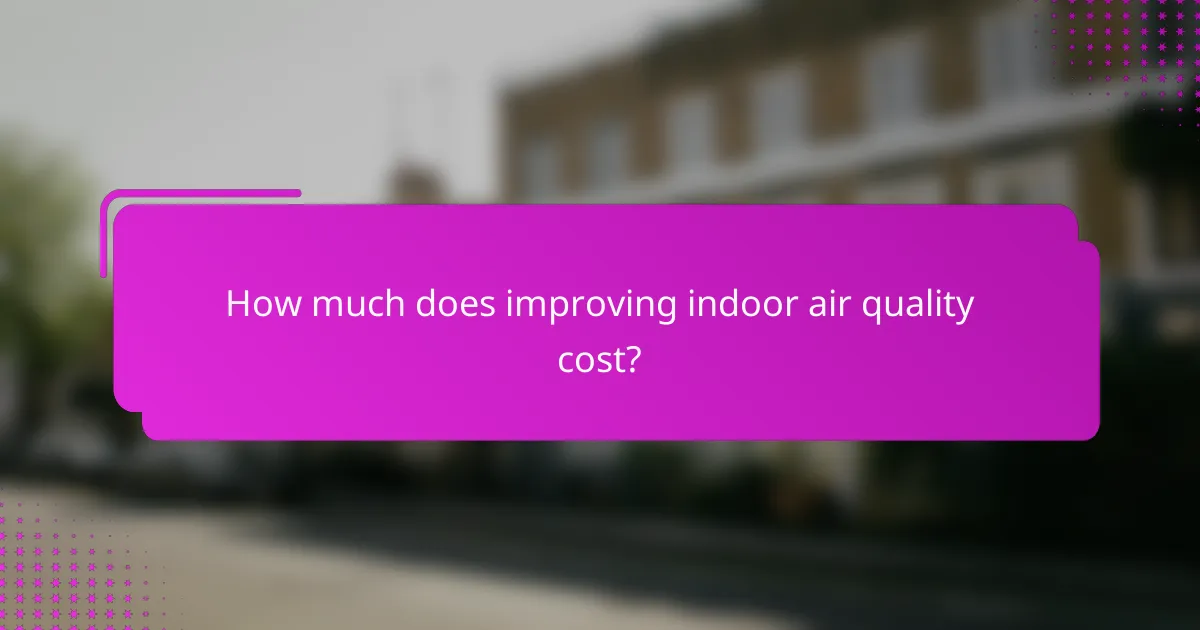
How much does improving indoor air quality cost?
Improving indoor air quality can cost anywhere from a few hundred to several thousand dollars, depending on the methods and systems chosen. Key factors include the type of air purification systems, HVAC upgrades, and ongoing maintenance services.
Average costs for air purifiers
Air purifiers typically range from $100 to $1,000, depending on their size and features. Basic models can effectively filter dust and allergens, while advanced units may include HEPA filters and smart technology for monitoring air quality.
When budgeting for air purifiers, consider the size of the space you need to cover. Larger units or those designed for multiple rooms will generally cost more but can provide better air quality across your home.
Budgeting for HVAC upgrades
Upgrading your HVAC system can range from $2,500 to over $10,000, depending on the complexity and efficiency of the system. High-efficiency models can significantly improve air quality and reduce energy costs over time.
When planning for HVAC upgrades, consider the age of your current system and any local regulations regarding energy efficiency. Investing in a modern system can lead to better air filtration and overall comfort.
Costs of regular maintenance services
Regular maintenance for HVAC systems typically costs between $100 and $300 per visit, depending on the services provided. This can include filter changes, system checks, and cleaning, which are essential for maintaining good indoor air quality.
Establishing a maintenance schedule can help prevent costly repairs and ensure your systems are operating efficiently. Consider setting aside a budget for at least one or two maintenance visits per year.
Long-term savings from energy efficiency
Investing in air quality improvements can lead to significant long-term savings on energy bills, often ranging from 10% to 30% annually. More efficient systems and better insulation can reduce energy consumption while enhancing comfort.
When evaluating potential savings, consider the initial investment against the expected reduction in utility costs. Over time, these savings can offset the upfront expenses associated with improving indoor air quality.
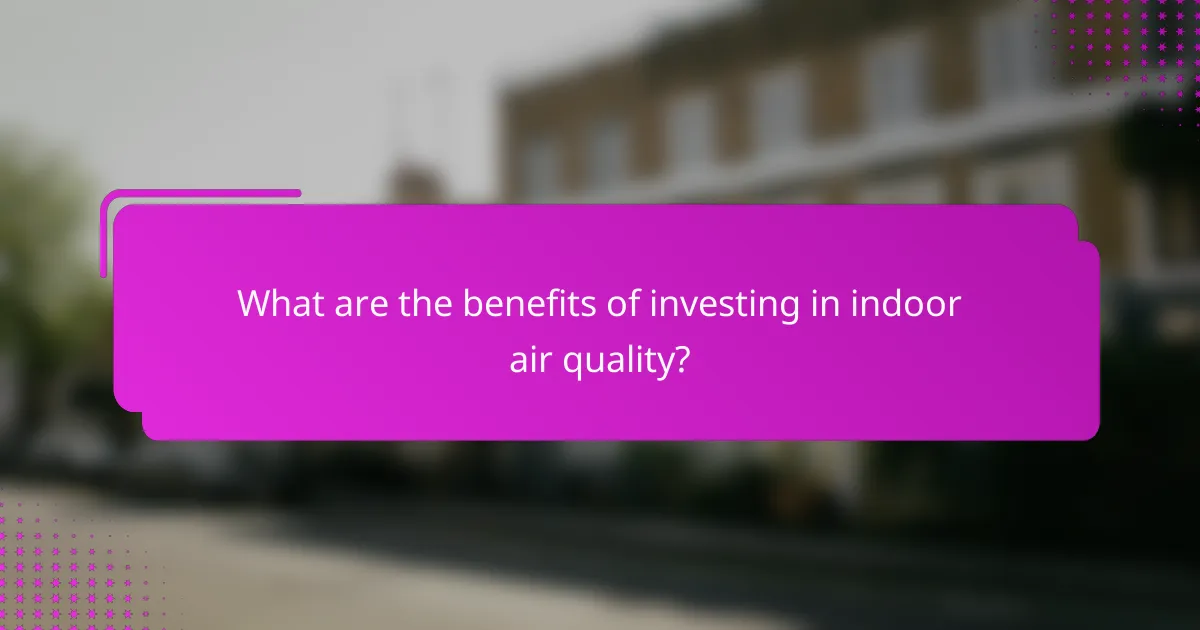
What are the benefits of investing in indoor air quality?
Investing in indoor air quality (IAQ) offers numerous advantages that enhance both health and economic outcomes. Improved air quality can lead to better occupant well-being, increased property value, and heightened productivity in various settings.
Health benefits for occupants
Enhancing indoor air quality significantly improves the health of occupants by reducing exposure to pollutants and allergens. Cleaner air can lead to fewer respiratory issues, allergies, and other health problems, creating a healthier living or working environment.
For instance, implementing air filtration systems and regular maintenance can help eliminate dust, mold, and volatile organic compounds (VOCs), which are common indoor pollutants. This proactive approach is particularly beneficial in homes with children, the elderly, or individuals with pre-existing health conditions.
Increased property value
Investing in indoor air quality can lead to an increase in property value, as potential buyers often prioritize homes with good air quality. Properties that feature advanced air purification systems or comply with recognized IAQ standards can command higher prices in the real estate market.
Moreover, properties with improved air quality may sell faster, as buyers are increasingly aware of the health implications associated with poor indoor environments. This trend highlights the importance of maintaining high IAQ standards to enhance marketability.
Enhanced productivity in workplaces
Improving indoor air quality in workplaces can lead to enhanced productivity among employees. Studies have shown that better air quality correlates with increased focus, creativity, and overall job performance, which can ultimately benefit a company’s bottom line.
Employers can achieve this by investing in proper ventilation, air filtration systems, and regular monitoring of air quality metrics. Creating a comfortable and healthy work environment encourages employee satisfaction and retention.
Reduction in sick days
Investing in indoor air quality can lead to a noticeable reduction in sick days taken by employees. Healthier indoor environments contribute to fewer illnesses, such as colds and respiratory infections, which are often exacerbated by poor air quality.
By maintaining good IAQ, organizations can minimize absenteeism and its associated costs, leading to a more efficient workforce. Regular assessments and improvements to air quality can help sustain these benefits over time.
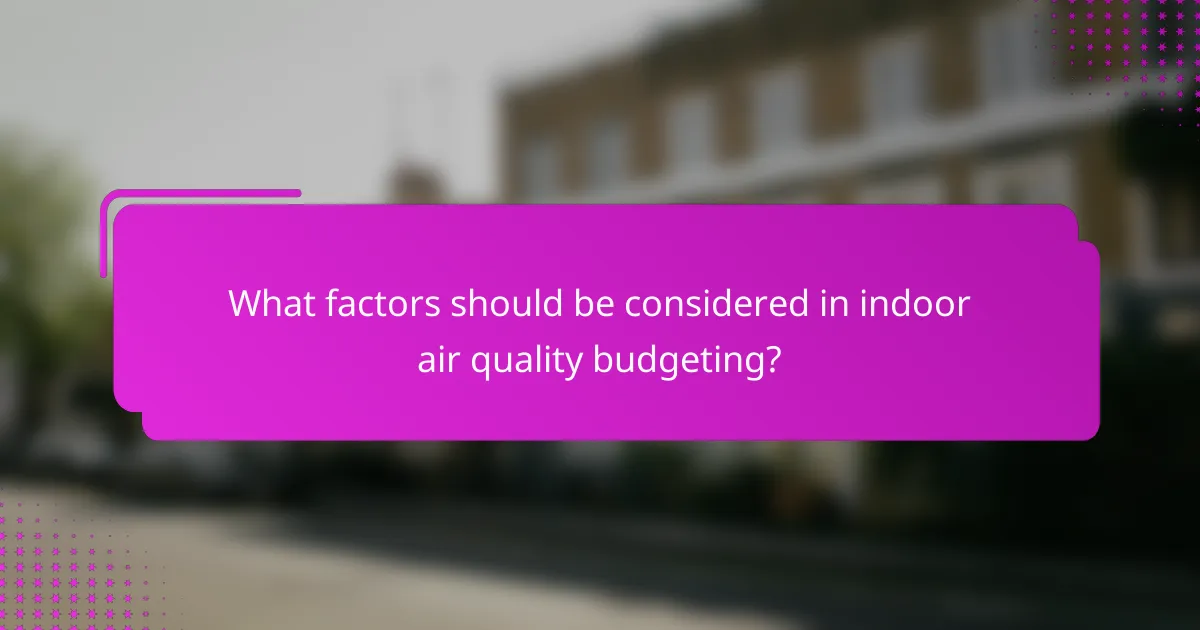
What factors should be considered in indoor air quality budgeting?
When budgeting for indoor air quality (IAQ), consider factors such as the size and layout of the space, local climate conditions, and any existing air quality issues. These elements significantly influence the costs and strategies needed to improve IAQ effectively.
Size and layout of the space
The size and layout of a space directly impact the complexity and cost of IAQ improvements. Larger areas may require more extensive ventilation systems or air purifiers, while unique layouts can complicate airflow and distribution. For instance, a multi-story building may need separate systems for each floor to ensure adequate air circulation.
When planning, assess the square footage and the number of rooms to determine the necessary equipment. A good rule of thumb is to allocate a budget that scales with the area; for example, expect to spend more on systems for spaces over 2,000 square feet compared to smaller areas.
Local climate and weather conditions
Local climate plays a crucial role in indoor air quality budgeting. In humid regions, moisture control systems may be necessary to prevent mold growth, while colder climates may require robust heating systems to maintain air quality during winter months. Understanding seasonal variations can help tailor your budget effectively.
Consider the average humidity and temperature ranges in your area. For example, homes in areas with high humidity may need dehumidifiers, which can add several hundred dollars to your budget. Factor in these local conditions to avoid unexpected costs later.
Existing air quality issues
Identifying existing air quality issues is essential for effective budgeting. Common problems include high levels of particulate matter, volatile organic compounds (VOCs), or inadequate ventilation. Addressing these issues may require specific solutions like air purifiers, HVAC upgrades, or regular maintenance services.
Conduct an air quality assessment to pinpoint specific problems. For example, if VOCs are a concern, you may need to invest in low-emission materials or advanced filtration systems. Allocating funds for initial assessments can save money in the long run by preventing larger issues from developing.
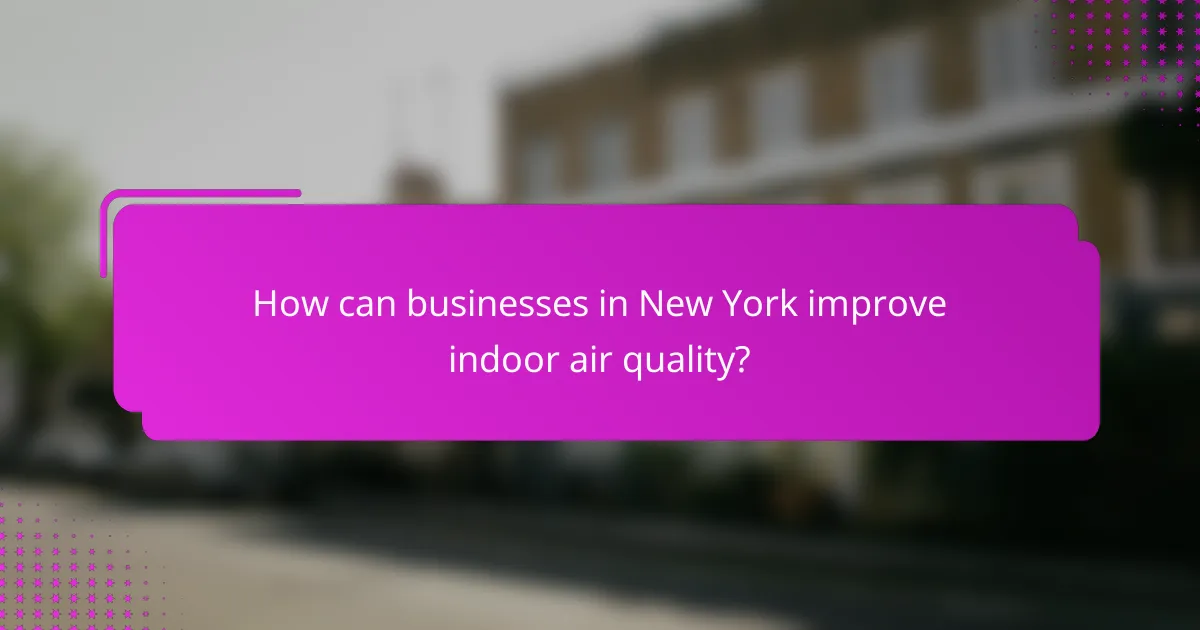
How can businesses in New York improve indoor air quality?
Businesses in New York can enhance indoor air quality by implementing effective ventilation systems, using air purifiers, and maintaining regular maintenance schedules for HVAC systems. These measures not only improve employee health but can also lead to increased productivity and reduced absenteeism.
Key strategies for improving indoor air quality
To improve indoor air quality, businesses should focus on proper ventilation, humidity control, and the use of low-emission materials. Ensuring that fresh air circulates throughout the workspace can significantly reduce pollutants. Regularly checking and replacing air filters in HVAC systems is also crucial for maintaining clean air.
Cost considerations for indoor air quality improvements
The costs associated with improving indoor air quality can vary widely depending on the strategies implemented. Basic measures like air filter replacements may cost a few hundred dollars annually, while installing advanced ventilation systems could range from several thousand to tens of thousands of dollars. Businesses should assess their specific needs and budget accordingly.
Benefits of investing in indoor air quality
Investing in indoor air quality can yield substantial benefits, including enhanced employee well-being and productivity. Studies suggest that improved air quality can lead to a reduction in sick days and an increase in overall job satisfaction. Additionally, businesses may experience lower energy costs due to more efficient HVAC systems.
